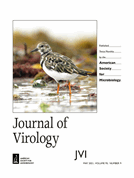INTRODUCTIONHepatitis B virus (HBV) is a DNA virus that infects over 360 million people worldwide, despite an available vaccine. Current treatment options for HBV infection are limited and rarely result in clearance (1). Hepatitis C virus (HCV) is an RNA virus that infects 71 million people worldwide, with no available vaccine but successful treatment options through direct acting antiviral (DAA) agents (2). Replicating in hepatocytes and targeting the liver, both HBV and HCV can cause hepatitis that may progress to cirrhosis or hepatocellular carcinoma (3). HCV infection induces innate immune activation in hepatocytes (4), but multiple viral mechanisms impede the development of effective antiviral immunity (5, 6), resulting in persistent infection (3). In contrast, HBV infection does not cause strong innate immune activation in hepatocytes (7, 8), but most immunocompetent individuals can still eliminate the virus (3). This work provides an explanation for this paradox.HBV and HCV frequently coexist in highly endemic areas due to shared modes of transmission, despite different replication strategies and life cycles (9). The two viruses exhibit immunological crosstalk (10). Thus, the suppression of HBV replication occurred in chronic hepatitis B patients who developed acute hepatitis C (11). Conversely, clearing HCV with DAA treatment reduced hepatic interferon (IFN) response, leading to HBV reactivation in coinfected individuals (12). Similarly, HBV superinfection can inhibit HCV replication (13) and may even result in spontaneous clearance of HCV (14). In a study of HBV/HCV coinfected subjects, we found lower HCV viral loads compared to HCV-only infected individuals (15). Studies
Activation of AIM2 by hepatitis B virus results in antiviral immunity that suppresses hepatitis C virus during coinfection

